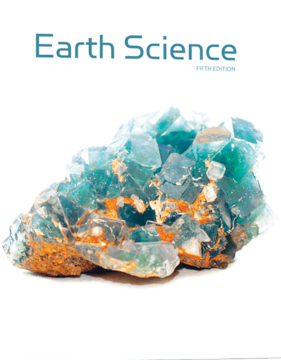BJU Press’s Earth Science (fifth edition) targets students in eighth grade but might be used with seventh graders as well. The text covers both earth and space science, although space science is taught in only the last of the course’s six units.
Within the first unit, the authors discuss the course's fundamentalist biblical perspective including defense of a young earth. At different places in the text, conflicting ideas regarding the origins debate are presented along with explanations contrasting those views with the viewpoint taught in this course. Conflicting theories and interpretations are discussed respectfully, so students learn concepts that they would learn from secular textbooks. However, the course is heavily weighted to convince students of the validity of the text’s viewpoint. The text also stresses the importance of caring for the environment as part of both Christian stewardship and God’s directive for man to take dominion over the earth. These themes resurface frequently.
At 699 pages, this Earth Science text is very comprehensive. It covers matter, forces, energy, maps, geology, earthquakes, geologic formations, oceans and seas, surface and groundwater, rocks, minerals, ores, fossils, weathering, erosion, the atmosphere, weather, climate, the solar system, stars, galaxies, the universe, and space exploration. The text deals fairly with issues such as the ozone hole and climate change, presenting scientific data along with various viewpoints. For those who might not have time to cover everything, chapters are identified as foundational, key, or enrichment, showing their decreasing level of importance. Make sure you cover foundational chapters, aim to complete key chapters, and choose whether to use enrichment chapters.
This Earth Science text is very well written, using stories, history, current events, and hot-button topics to present information within contexts that interest students. Also stressed are interactions through discussion, demonstrations, lab work, and other activities. The text is up to date with information on recent scientific discoveries and technology. In the teacher’s edition, teachers are encouraged to use technology in lesson presentations and activities whenever possible. Links to web resources, such as some on Google Earth, are available on a free resources webpage.
Students can read through the textbook on their own, but a teacher, drawing on additional information and ideas from the teacher manual and online resources, can make the course even more interesting. Lab activities really should be done with a parent or teacher if the student is not in a group class.
The two-volume teacher's edition has slightly reduced images of student pages with answers and teaching information in the side and bottom margins.
The Earth Science Lab Manual offers both activities and experiments. Students might work with graph paper and data as they learn about handling data and making predictions. They might use Google Earth to plan a pretend vacation—the goal being to become familiar with Google Earth which the teacher or student can use later in the course. Or they might perform an experiment traditionally by recording and analyzing data. The Lab Manual walks students through each activity step by step with clear explanations, providing lines and charts for recording information and answering questions. For each lab activity, there is a list of equipment. This includes easy-to-find things such as scissors, cardboard, a glue stick, drinking straws, food coloring, and a drill (with drill bit), as well as lab equipment and supplies such as a scale, graduated cylinders, hydrochloric acid, and a ring stand with a clamp. The lengthy list of required resources is at the back of the manual.
Students don't need to complete all lab activities, and some will be impractical for homeschoolers. To make labs easier for homeschoolers, Logos Science has created a lab kit for this course with its own addendum to the lab manual that eliminates the need for expensive equipment and activities that could be dangerous in a home setting. Just having these resources gathered for you makes this kit a practical investment, but having the number of options narrowed down is helpful as well. From one to four students can use one lab kit. The teacher’s edition of the lab manual has reproduced images of student pages with overprinted answers.
Both the student textbook and lab manual are softcover books printed in full color with plentiful images. Each of the textbook's 25 chapters is divided into sections, each followed by a set of review questions. Every chapter concludes with a chapter review with three components: a list of key terms, summaries of key points, and a set of review questions. The teacher's edition has answers to the questions followed by the page number where the information was taught. Tests are in a separate book, which has its own answer key.
The Earth Science subject kit consists of the student text, the two-volume teacher’s edition, the lab manual, the teacher’s edition of the lab manual, tests, and the answer key for the tests.










